
Energy Metabolism (Energy I) (The Living Cell)
Learning objectives Describe the difference between anabolism and catabolism Describe the importance of glucose as a source of energy Outline the key elements of glycolysis, including the important intermediates formed, key regulator steps and the products formed Describe the role of lactate and NAD+ in the continued production of ATP in muscle in the absence of oxygen Describe the relationship between glycolysis and the tricarboxylic acid cycle (TCA) and oxidative phosphorylation Outline the key elements of the TCA cycle including the important intermediates formed, key regulator steps and the products formed Describe how oxidative phosphorylation generates ATP and the role of oxygen in this process Outline how the generation of a proton gradient can lead to the formation of ATP Describe how mitochondria present in brown fat differ from mitochondria in other cells Describe the biological significance of compartmentalisation
-
We derive all the energy and many of the macromolecules we need from the food we eat.
We use this energy to do what? (4)
• synthesis of new molecules
• establishing ion gradients
• perform mechanical work
• keep warm
-
What is the definition of Catabolic processes?
The breakdown of complex molecules to release energy
-
What is the definition of Anabolic processes?
Synthesis of new molecules from less complex components
-
Picture outlining the overview of metabolism:
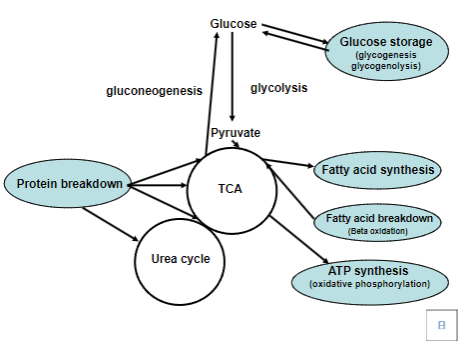
-
Picture outlining the catabolic and anabolic processes of metabolism:

-
Major fuels obtained from the diet include carbohydrates, fats and proteins.
When oxidised, they produce what?
Water, carbon dioxide and ATP
-
Most catabolism consists of reactions that extract energy from fuelstuffs and converts it into what?
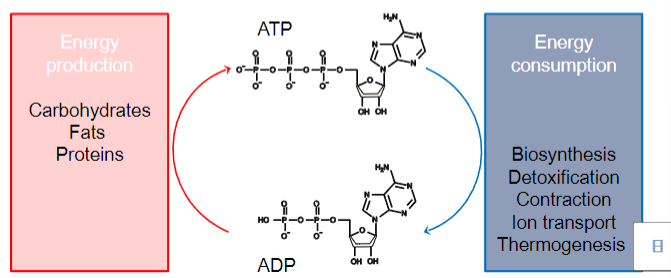
ATP
-
What is the total amount of energy available from the hydrolysis of ATP per mole?
65kj/mole
-
How much ATP do we use at rest? (in 24 hours)
40Kg/24hours
-
How much ATP do we use during exercise? (Per minute)
0.5Kg/minute
-
How much ATP does the body have at any given time?
100g
-
What does 'NAD' stand for?
Nicotinamide Adenine Dinucleotide
-
What does 'FAD' stand for?
Flavin Adenine Dinucleotide
-
What is FAD and NAD? What reactions are they used for?
-Activated carriers of electrons
-Used for oxidation/reduction reactions
-
What is the oxidised and reduced form of NAD?
Oxidised: NAD+
Reduced: NADH and H+
-
What is the oxidised and reduced form of FAD?
Oxidised: FAD+
Reduced: FADH2
-
What are the FOUR major oxidative pathways you are expected to remember?
• Glycolysis
• Citric acid cycle
• Electron transport coupled to oxidative phosphorylation
• Fatty acid oxidation
-
What is oxidisation?
-The loss of electrons by a substance
-The substance that undergoes oxidation is called the reducing agent
-
What is Reduction?
-The gain of electrons by a substance
-The substance that undergoes reduction is called the oxidizing agent
-
Outline the steps of glycolysis. What are the reactants and products?
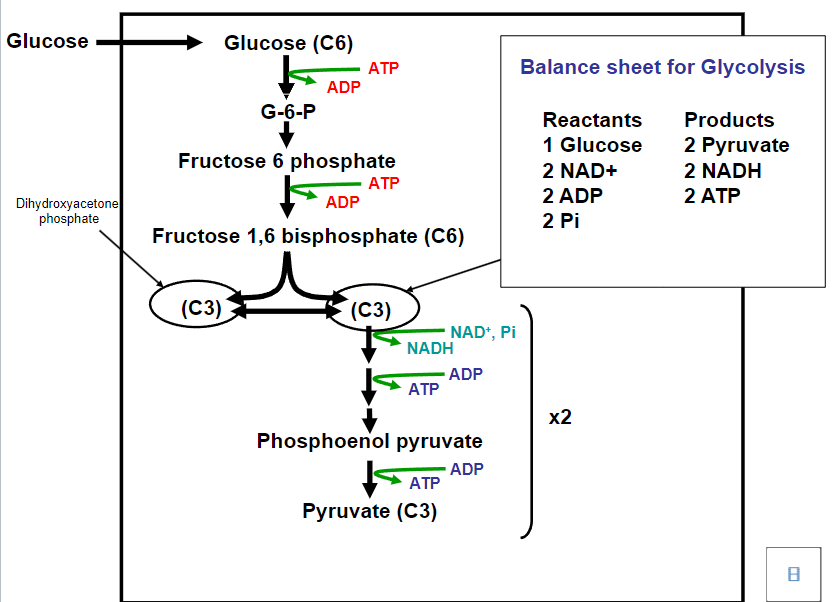
C3-DAPH (dihydroxyacetone phosphate)
C3-GAP (glyceraldehyde 3-phosphate)
-
What regulates glycolysis?
Enzymes
-
What are the enzymes used in glycolysis?
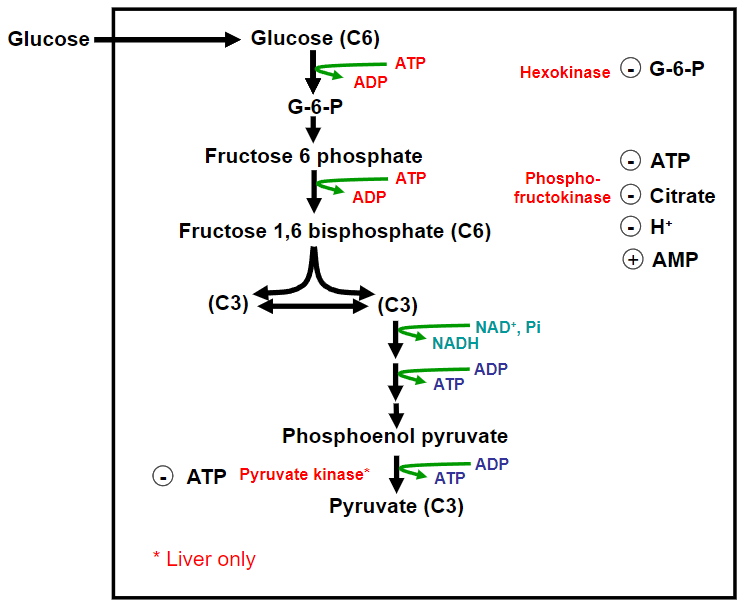
-Hexokinase
-Phosphofructokinase
-Pyruvate kinase
-
What is the equation and enzyme that produces AMP?

-
AMP is a good indicator of what?
Low energy state of the cell
-
PFK (phosphofructokinase) is the most important control point, why?
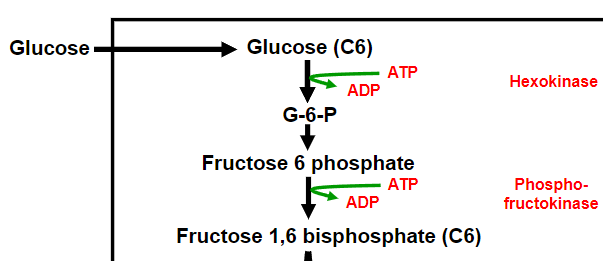
-High concentrations of ATP inhibit PFK by lowering the affinity for Fructose 6 phosphate
-PFK inhibited by low pH
-PFK is inhibited by citrate
-Inhibition of PFK leads to inhibition of hexokinase, as it leads to an increase/accumulation of G-6-P
-
PFK is stimulated indirectly by a build up of what?
F6P
-
Is glucokinase in the liver inhibited by G6P?
NO
-
What is glucose converted from in the glycosidic cycle?
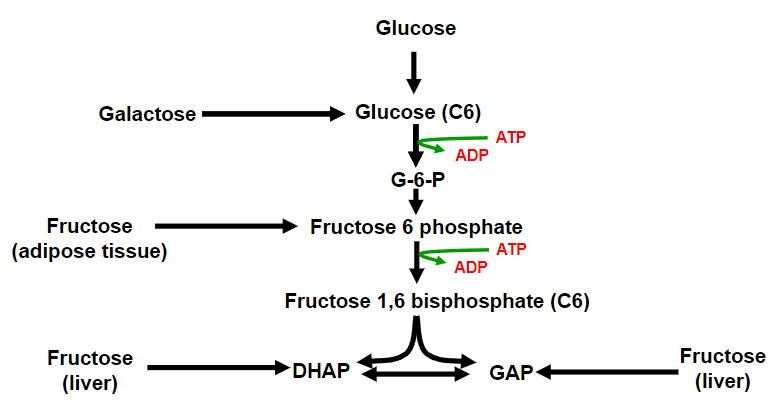
Galactose
-
What is Fructose 6 phosphate converted from in the glycosidic cycle?
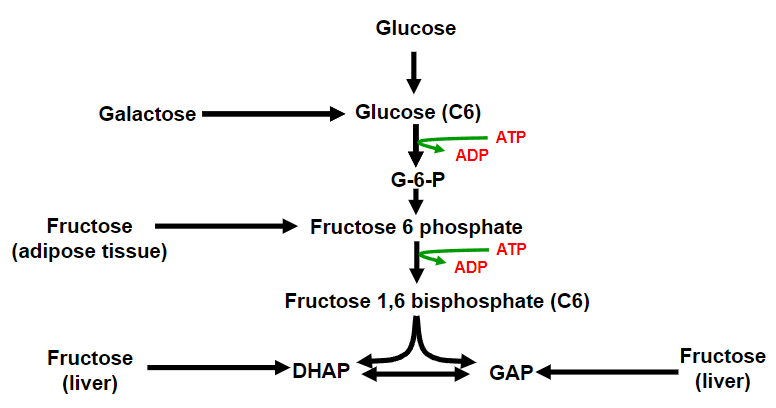
Fructose (from the adipose tissue)
-
What is DHAP (Dihydroxyacetone phosphate) and GAP (glyceraldehyde 3-phosphate) converted from in the glycosidic cycle?
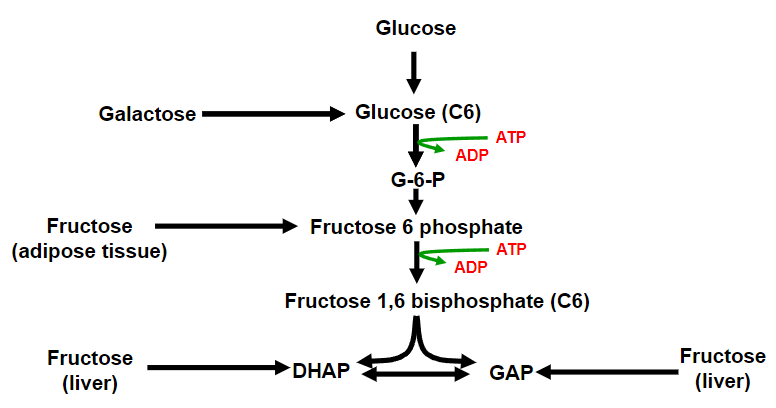
Fructose (from the liver)
-
Outline the steps of glycolysis anaerobically (in exercising muscles)
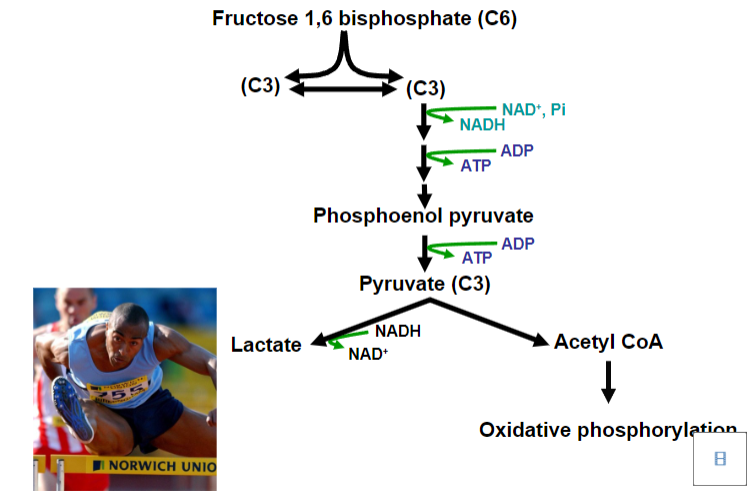
-
How are the energy needs of tumours (cancers) met? Why this method? (3)
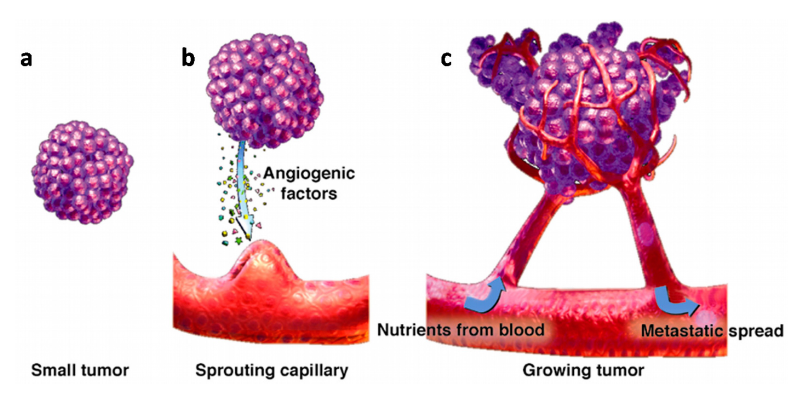
Anaerobic respiration
-Tumours often experience a state of hypoxia
-Tumour cells divide rapidly and may outgrow their existing blood supply
-Cancer cells can have high metabolic rates, leading to increased oxygen consumption
-
What is the definition of angiogenesis?
Is the process of forming new blood vessels from existing ones
-
Low oxygen stimulates the expression of what?
Many glycolytic enzymes
-
A reduction in oxygen leads to the activation of what transcription factor? What does this factor do?
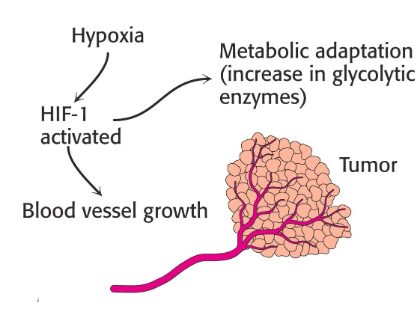
-HIF-1α
-HIF-1α regulates the expression of a number of enzymes in the glycolytic pathway

